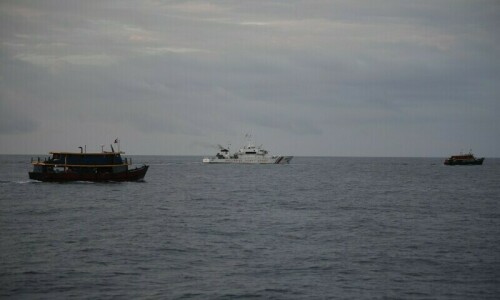
MANILA: Philippine rescuers waded through chest-deep floodwaters on Wednesday to reach residents trapped by Tropical Storm Trami, which has killed 14 people and forced thousands to evacuate as it barrels toward the east coast.
Torrential rain has turned streets into rivers, submerged entire villages and buried some vehicles in volcanic sediment set loose by the downpour.
At least 32,000 people have fled their homes in the northern Philippines, police said, as the storm edges closer to the Southeast Asian country’s main island of Luzon.
In the Bicol region, about 400 kilometres southeast of the capital Manila, “unexpectedly high” flooding was complicating rescue efforts, said police. “We sent police rescue teams but they struggled to enter some areas because the flooding was high and the current was so strong,” regional police spokeswoman Luisa Calubaquib Said.
Eleven people drowned in floodwaters in the Bicol city of Naga, local police chief Erwin Rebellion said. An elderly woman drowned in Quezon province southeast of the capital, while a toddler was also killed after falling into a flooded canal, police said. Manila’s civil defence office reported one person was killed by a falling tree branch.
As of 8pm, the storm’s centre was 150 kilometres east of Luzon’s Isabela province with maximum sustained winds rising to 95 kilometres per hour, the national weather agency said.
It was expected to smash into the coast of Isabela sometime during the night or early Thursday, slightly weakening as it crosses the island and heads out into the South China Sea, the agency added.
More than 500 millimetres of rain, or over a month’s worth, has already fallen on the region in the past 24 hours. Photos on Wednesday showed streets submerged by muddy floodwaters in Camarines Sur province’s Bato municipality, with only the roofs of houses and convenience stores visible. “It’s getting dangerous. We’re waiting for rescuers,” resident Karen Tabagan said.
In Naga, about 40 kilometres from Bato, half of the 600 villages were fully submerged by flooding.
Published in Dawn, October 24th, 2024














































Dear visitor, the comments section is undergoing an overhaul and will return soon.